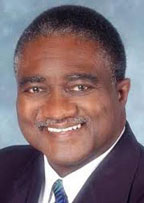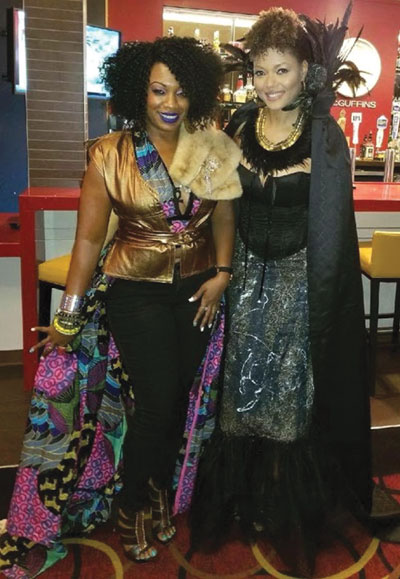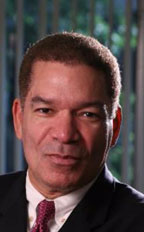
Racism on College Campuses
By George E. Curry, George Curry Media Columnist
As I followed recent events at the University of Missouri that culminated in the resignation of its president for mishandling incidents of blatant racism on the Columbia, Mo. campus, I thought back to an article I wrote as a Washington correspondent for the Chicago Tribune nearly three decades ago.
The article, published Feb. 17, 1987 – long before this current crop of college students were born – ran under the headline, “Racial Climate Turn Cool on Campuses.” I began the article by recounting the story of Douglas Wilson, an African American, being paired with Wade Bartley, who is White, in a dorm room at Penn State University.
“Luckily for both of us, I try very hard not to be prejudice (sic), but the fact is that because we are of different races, we are very different both physically and mentally,” Bartley wrote in a term paper. “…My roommate, like most Blacks today, abuse and overextend (sic) the rights they have received.”
After reading the paper, Wilson was fuming.
“The two never reconciled their differences, and Wilson finally moved out and roomed with another Black student.” I wrote. “While it is not the most dramatic example, some educators have called the Penn State incident symptomatic of an increase in racial tension on the campuses of the nation’s predominantly white universities.
“More vivid examples rocked the Citadel, a military academy where five white cadets dressed in Ku Klux Klan regalia burst into the room of a Black cadets, and at the University of Alabama, where a cross was burned in front of a building that was to house a Black sorority.”
I also noted that a Black woman leaving her job as a telephone operator at the University of Pennsylvania was called derogatory names and was struck by a bottle of urine thrown from a dormitory window.
At Smith College, an elite women’s institution in Northampton, Mass., the minority cultural center was defaced with the inscriptions, “Niggers, chinks and spics stop your complaining” and “Niggers go home.”
Two Black students at the State University of New York at Albany re-turned to their dorm and was met by a sign attached to their door reading, “We don’t want niggers on our floor. Leave tomorrow or die.”
The New York Times recently recounted a string of racist incidents un-der the headline, “At University of Missouri, Black Students See a Campus Riven by Race.”
It began, “At first, Briana Gray just chalked up the comments and questions from her new roommate at the University of Missouri to innocent ignorance: How do you style your hair? What do you put in it?
“But then her white roommate from rural Missouri started playing a rap song with a racial slur and singing the slur loudly, recalled Ms. Gray, a Black senior from suburban Chicago. Another time, the roommate wondered whether Black people had greasy skin because slaves were forced to sweat a lot.
“Then one day, Ms. Gray said, she found a picture tacked to her door of what appeared to be a Black woman being lynched…”
Symone Lenoir told The Times about the burden of being Black on a White campus.
“It can be exhausting when people are making assumptions about you based on your skin color,” she said. “It can be exhausting feeling like you’re speaking for your entire race.”
So exhausting, she said, that some mornings she asks herself, “Do I even want to go to class and sit with people?”
Politico observed, “But many claim there’s a glimmer of hope: The next generation of Americans, they say, is ‘post-racial’ – more tolerant, and therefore more capable of easing these race-based inequities. Unfortunately, closer examination of the data suggests that millennials aren’t racially tolerant, they’re racially apathetic: They simply ignore structural racism rather than try to fix it.”
The Washington Post was even more blunt: “Millennials are just as racist as their parents.”
There is a sharp contrast in the treatment of Black and White millennials. In 2013, the incarceration rate of Black men 18 and 19 years old was seven times higher than they were for Whites in this same age group and twice as high as for Latino men in that age bracket.
More than half – 54.4 percent – reported that they or someone they knew was harassed or subjected to violence by police, compared with 32.8 percent of White youth and 24.8 percent of Latino youth.
One of my prized high school journalism workshop students from St. Louis, Vivian King, told about the excitement of being named homecoming queen in 1985 along with Marvin Cobbs, the Black homecoming king.
“I think some of the alumni were not ready for two African-Americans to be king and queen,” she recounted. “When we were announced at halftime, there was a spattering of boos. It was a little disheartening to hear that. It created quite the discussion on campus.”
And so have the recent protests. Now, it’s time for action.
George E. Curry is President and CEO of George Curry Media, LLC. He is the former editor-in-chief of Emerge magazine and the National Newspaper Publishers Association News Service (NNPA). He is a keynote speaker, moderator, and media coach. Curry can be reached through his Web site, georgecurry.com. You can also follow him at twitter.com/currygeorge, George E. Curry Fan Page on Facebook, and Periscope. See previous columns at http://www.georgecurry.com/columns.





Be the first to comment